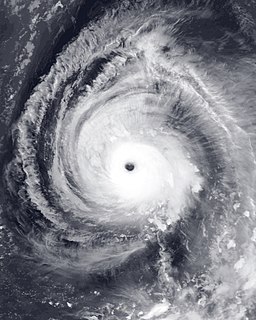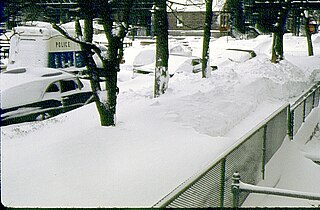Related Research Articles

The New-York Tribune was an American newspaper founded in 1841 by editor Horace Greeley. It bore the moniker New-York Daily Tribune from 1842 to 1866 before returning to its original name. From the 1840s through the 1860s it was the dominant newspaper first of the American Whig Party, then of the Republican Party. The paper achieved a circulation of approximately 200,000 in the 1850s, making it the largest daily paper in New York City at the time. The Tribune's editorials were widely read, shared, and copied in other city newspapers, helping to shape national opinion. It was one of the first papers in the north to send reporters, correspondents, and illustrators to cover the campaigns of the American Civil War. It continued as an independent daily newspaper until 1924 when it merged with the New York Herald. The resulting New York Herald Tribune remained in publication until 1966.

Hannah Lynn Storen Hicks, known professionally as Hannah Storm, is an American television sports journalist, serving as the anchor of ESPN's SportsCenter Face to Face. She was also host of the NBA Countdown pregame show on ABC as part of the network's National Basketball Association (NBA) Sunday game coverage. She is also the play-by-play announcer on Amazon Prime Video during Thursday Night Football with Andrea Kremer.

The Armistice Day Blizzard took place in the Midwest region of the United States on November 11 and November 12, 1940. The intense early-season "panhandle hook" winter storm cut a 1,000-mile-wide (1600 km) swath through the middle of the country from Kansas to Michigan.

Hurricane Carmen was the most intense tropical cyclone of the 1974 Atlantic hurricane season. A destructive storm with widespread impacts, Carmen originated as a tropical disturbance that emerged from Africa toward the end of August. The disturbance traveled westward, spawning a tropical depression east of the Lesser Antilles on August 29. The storm moved through the Caribbean Sea, and in an environment conducive to intensification, it quickly strengthened to its initial peak intensity as a Category 4 hurricane on the Saffir–Simpson Hurricane Scale. Carmen moved ashore on the Yucatán Peninsula, where, despite striking a sparsely populated region, it caused significant crop damage and killed several people. Before the storm's arrival, officials had set up several evacuation centers, and many residents had moved to higher ground.
The Chicago Storm was an indoor soccer team in the Major Indoor Soccer League from 2004 to 2008 and the Xtreme Soccer League in 2009. The team folded after playing in a local indoor league, the Ultimate Soccer League.
November gale, the Witch of November, or November Witch, refers to the strong winds that frequently blow across the Great Lakes in autumn. The "witches" are caused by intense low atmospheric pressure over the Great Lakes pulling cold Canadian/Arctic air from the north or northwest and warm Gulf air from the south. When these cold and warm air masses collide, they can result in hurricane force winds that stir up large waves on the lakes.

The Okeechobee hurricane of 1928, also known as the San Felipe Segundo hurricane, was one of the deadliest hurricanes in the recorded history of the North Atlantic basin, and the third deadliest hurricane in the United States, only behind the 1900 Galveston hurricane and Hurricane Maria. The hurricane killed an estimated 2,500 people in the United States; most of the fatalities occurred in the state of Florida, particularly in Lake Okeechobee. It was the fourth tropical cyclone, third hurricane, and only major hurricane of the 1928 Atlantic hurricane season. It developed off the west coast of Africa on September 6 as a tropical depression, but it strengthened into a tropical storm later that day, shortly before passing south of the Cape Verde islands. Further intensification was slow and halted late on September 7. About 48 hours later, the storm strengthened and became a Category 1 hurricane on the Saffir–Simpson hurricane wind scale. Still moving westward, the system reached Category 4 intensity before striking Guadeloupe on September 12, where it brought great destruction and resulted in 1,200 deaths. The islands of Martinique, Montserrat, and Nevis also reported damage and fatalities, but not nearly as severe as in Guadeloupe.

The 1944 Cuba–Florida hurricane was a large Category 4 tropical cyclone on the Saffir–Simpson hurricane wind scale that caused widespread damage across the western Caribbean Sea and Southeastern United States in October 1944. It inflicted over US$100 million in damage and caused at least 318 deaths, the majority of fatalities occurring in Cuba. One study suggested that an equivalent storm in 2018 would rank among the costliest U.S. hurricanes. The full extent of the storm's effects remains unclear due to a dearth of conclusive reports from rural areas of Cuba. The unprecedented availability of meteorological data during the hurricane marked a turning point in the United States Weather Bureau's ability to forecast tropical cyclones.

The Rouse Simmons was a three-masted schooner famous for having sunk in a violent storm on Lake Michigan in 1912. The ship was bound for Chicago with a cargo of Christmas trees when it foundered off Two Rivers, Wisconsin, killing all on board.
Joseph Anthony Cafasso Jr. is an American former Fox News consultant on military and counterterrorism issues who left the network in 2002 after it was discovered he was a military imposter. Cafasso claimed to have been a retired Special Forces lieutenant colonel who was a Vietnam War veteran and recipient of the Silver Star, but his official service records showed he had been administratively separated in 1976 during basic training after 44 days.

The April or Spring nor'easter of 2007 was a nor'easter that affected mainly the eastern parts of North America during its four-day course, from April 14 to April 17, 2007. The combined effects of high winds, heavy rainfall, and high tides led to flooding, storm damages, power outages, and evacuations, and disrupted traffic and commerce. In the north, heavy wet snow caused the loss of power for several thousands of homes in Ontario and Quebec. The storm caused at least 18 fatalities.

Typhoon Yagi was an intense typhoon, the strongest of the 2006 Pacific typhoon season, which reached the equivalence of Category 5 on the Saffir–Simpson scale. Forming out of a tropical depression on September 16, Yagi quickly strengthened as it executed a slow clockwise loop over the open waters of the western Pacific Ocean. On September 19, Yagi strengthened into a typhoon as a subtropical ridge steered the storm towards the west. Two days later, the storm reached its peak intensity with winds of 195 km/h with a minimum pressure of 910 hPa (mbar). The typhoon gradually weakened as it recurved towards the northeast and was downgraded to a severe tropical storm on September 24 and became extratropical the next day. The storm was last noted near the Aleutian Islands on September 27. The typhoon caused severe damage on the island of Chichijima but no injuries were reported as a result of the storm.

Catastrophe: How Obama, Congress, and the Special Interests Are Transforming a Slump into a Crash, Freedom into Socialism, and a Disaster into a Catastrophe. .. and How to Fight Back is a 2009 book co-written by American political commentator Dick Morris and his wife Eileen McGann, which spells out hypothetical catastrophic consequences of the Barack Obama administration policies and shows how the Obama administration could be stopped.

Tropical Storm Alice was the first tropical cyclone in the Atlantic Ocean to receive a female name. It was a rare off-season tropical cyclone that hit Central America, Cuba, and Florida in late May to early June 1953. Alice formed on May 25 in the western Caribbean, and executed a large loop over Central America. It passed over western Cuba, causing heavy rainfall and possibly several casualties from drowning. It then executed another loop in the Gulf of Mexico, reached a peak intensity of 70 mph (110 km/h), and weakened before hitting the Florida panhandle on June 6. Although heavy rainfall occurred in Florida, there was little damage.

Hurricane Debbie was a moderate tropical cyclone which had significant impacts in Ireland as an extratropical cyclone. The fourth named storm of the 1961 Atlantic hurricane season, Debbie originated from a well-defined tropical disturbance that was first identified in late August over Central Africa. Tracking generally westward, the system moved off the coast of Senegal on September 5 into the Atlantic Ocean. By this time, it was estimated to have become a tropical depression, but forecasters did not issue advisories on the system until two days later. Late on September 6, Debbie passed through the southern Cape Verde Islands as a moderate tropical storm, resulting in a plane crash that killed 60 people in the islands. Once clear of the islands, data on the storm became sparse, and the status of Debbie was uncertain over the following several days as it tracked west-northwestward and later northward. It was not until a commercial airliner intercepted the storm on September 10 that its location became certain. The following day, Debbie intensified and reached its peak intensity as a Category 1 hurricane on the Saffir–Simpson hurricane scale, with maximum winds of 90 mph (150 km/h).

The Chicago blizzard of 1967 struck northeast Illinois and northwest Indiana on January 26–27, 1967, with a record-setting 23 inches (58 cm) snow fall in Chicago and its suburbs before the storm abated the next morning. As of January 2022, it remains the greatest snowfall in one storm in Chicago history. As the blizzard was a surprise during the day with people already at work or school, it stopped the city for a few days as people dug out. "The storm was a full-blown blizzard, with 50 mph-plus northeast wind gusts creating drifts as high as 15 feet."

Hurricane Joaquin was a powerful tropical cyclone that devastated several districts of The Bahamas and caused damage in the Turks and Caicos Islands, parts of the Greater Antilles, and Bermuda. It was also the strongest Atlantic hurricane of non-tropical origin recorded in the satellite era. The tenth named storm, third hurricane, and second major hurricane of the 2015 Atlantic hurricane season, Joaquin evolved from a non-tropical low to become a tropical depression on September 28, well southwest of Bermuda. Tempered by unfavorable wind shear, the depression drifted southwestward. After becoming a tropical storm the next day, Joaquin underwent rapid intensification, reaching hurricane status on September 30 and Category 4 major hurricane strength on October 1. Meandering over the southern Bahamas, Joaquin's eye passed near or over several islands. On October 3, the hurricane weakened somewhat and accelerated to the northeast. Abrupt re-intensification ensued later that day, and Joaquin acquired sustained winds of 155 mph (250 km/h), just short of Category 5 strength.
The 1946 Colorado A&M Aggies football team represented Colorado State College of Agriculture and Mechanic Arts in the Mountain States Conference (MSC) during the 1946 college football season. The Aggies compiled a 2–7 record, finished sixth in the MSC, and were outscored by a total of 184 to 50.

The 2020 Mesa mayoral election was held on August 4, 2020, to elect the mayor of Mesa, Arizona.

In February 2021, the state of Texas suffered a major power crisis, which came about as a result of three severe winter storms sweeping across the United States on February 10–11, 13–17, and 15–20. The storms caused the worst energy infrastructure failure in Texas state history, leading to shortages of water, food, and heat. More than 4.5 million homes and businesses were left without power, some for several days. At least 246 people were killed directly or indirectly, with some estimates as high as 702 killed as a result of the crisis.
References
- 1 2 Duncan, Mike (2017). The Storm before the Storm. New York: PublicAffairs. p. 105. ISBN 978-1-5417-2403-7.